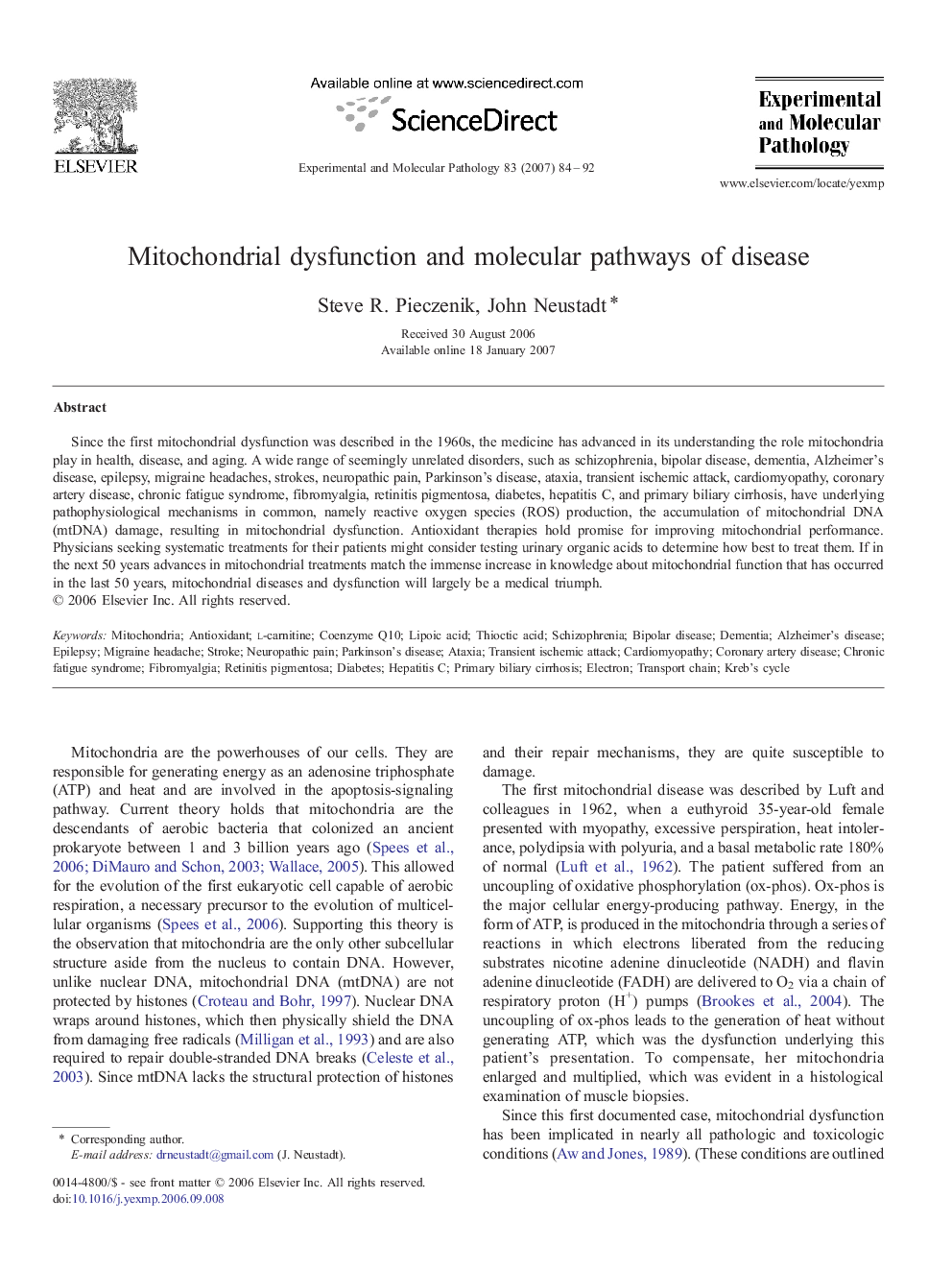| Article ID | Journal | Published Year | Pages | File Type |
|---|---|---|---|---|
| 2775754 | Experimental and Molecular Pathology | 2007 | 9 Pages |
Since the first mitochondrial dysfunction was described in the 1960s, the medicine has advanced in its understanding the role mitochondria play in health, disease, and aging. A wide range of seemingly unrelated disorders, such as schizophrenia, bipolar disease, dementia, Alzheimer's disease, epilepsy, migraine headaches, strokes, neuropathic pain, Parkinson's disease, ataxia, transient ischemic attack, cardiomyopathy, coronary artery disease, chronic fatigue syndrome, fibromyalgia, retinitis pigmentosa, diabetes, hepatitis C, and primary biliary cirrhosis, have underlying pathophysiological mechanisms in common, namely reactive oxygen species (ROS) production, the accumulation of mitochondrial DNA (mtDNA) damage, resulting in mitochondrial dysfunction. Antioxidant therapies hold promise for improving mitochondrial performance. Physicians seeking systematic treatments for their patients might consider testing urinary organic acids to determine how best to treat them. If in the next 50 years advances in mitochondrial treatments match the immense increase in knowledge about mitochondrial function that has occurred in the last 50 years, mitochondrial diseases and dysfunction will largely be a medical triumph.
